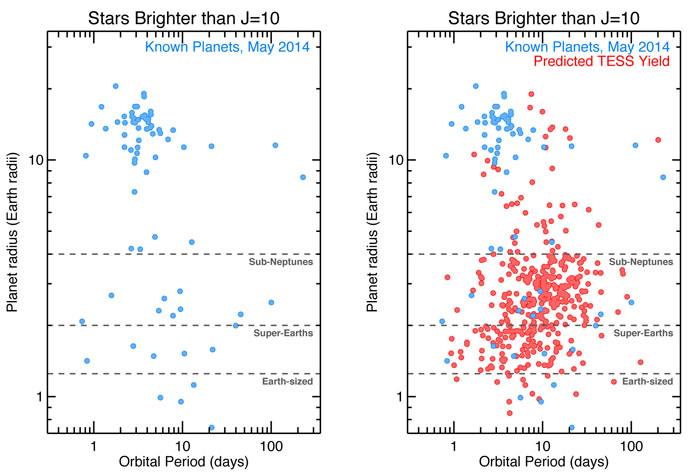This website is kept for archival purposes only and is no longer updated.
TESS stars will be 30-100 times brighter than those surveyed by the Kepler satellite; thus,TESS planets should be far easier to characterize with follow-up observations. These follow-up observations will provide refined measurements of the planet masses, sizes, densities, and atmospheric properties.
TESS will provide prime targets for further, more detailed characterization with the James Webb Space Telescope (JWST), as well as other large ground-based and space-based telescopes of the future. TESS's legacy will be a catalog of the nearest and brightest stars hosting transiting exoplanets, which will comprise the most favorable targets for detailed investigations in the coming decades.
The Kepler project has provided ground-breaking new insights into the population of exoplanets in our galaxies; among the discoveries made using data from Kepler is the fact that the most common members of the exoplanet family are Earths and Super-Earths. However, the majority of exoplanets found by Kepler orbit faraway, faint stars. This, combined with the relatively small size of Earths and Super-Earths, means that there is currently a dearth of such planets that can be characterized with follow-up observations.
|
|
 |
|
| Figure: Sizes and orbital periods of planets with host stars brighter than J = 10. Left.| Currently known planets, including those from the Kepler and CoRoT missions as well as ground-based surveys. Right.| Figure on the left now including the simulated population of TESS exoplanet detections. |